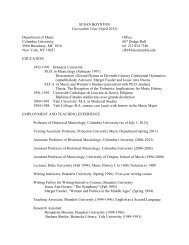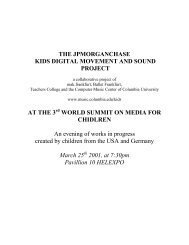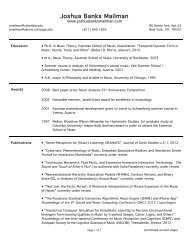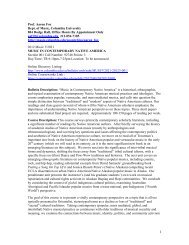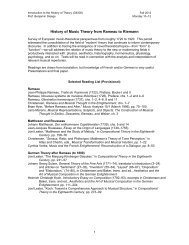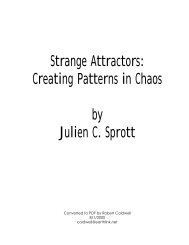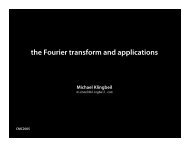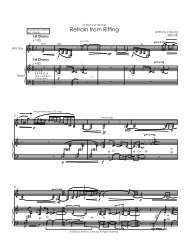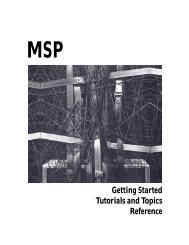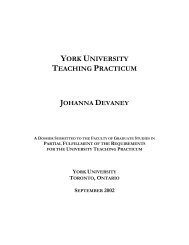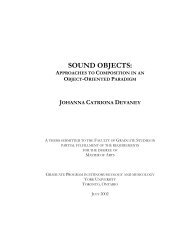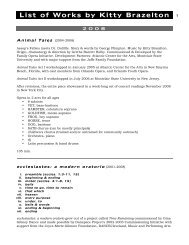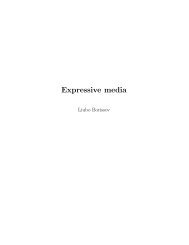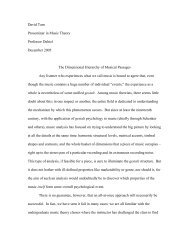Text, including the two scores - Columbia University Department of ...
Text, including the two scores - Columbia University Department of ...
Text, including the two scores - Columbia University Department of ...
Create successful ePaper yourself
Turn your PDF publications into a flip-book with our unique Google optimized e-Paper software.
Commentary What follows are ruminations; some have bubbled in my mind for some time, while many have surfaced in <strong>the</strong> writing <strong>of</strong> <strong>the</strong>se <strong>two</strong> concert works (though not all are directly relatable to <strong>the</strong>m). I pose more questions than I 3.<br />
answers, along with implicit suggestions for my own future investigations. In previous writings [5], I have discussed computer compositional aims as creating one’s own path between computational layers <strong>of</strong> abstraction. In <strong>the</strong> give<br />
sense, this journey takes us from hardware bits to assembly code to programming languages to applications, user interfaces, and operating grandest<br />
These layers are <strong>the</strong> geologic record <strong>of</strong> computer development, with a history <strong>of</strong> tools and methods for traversing <strong>the</strong>m. Any large program contains its own unique hierarchy <strong>of</strong> structures, ranging from low-level (working with primitive-type variables, directly accessing relevant memory and hardware, systems.<br />
to high-level (creating large-scale modular abstractions with userdefinable properties and behavior). The parallels to composition (or, at least, to modes <strong>of</strong> composition with hierarchical or layered structures), seem evident. A traditional composer may etc),<br />
subvert, or recreate <strong>the</strong> boundaries and paths between musical abstractions (i.e. pitches abstracting to tonality, or momentary properties to use,<br />
form, etc) to play with an audience’s sense <strong>of</strong> cause and effect; so too may a programmer define his or her own correlations and causations. In <strong>the</strong> discrete formulations <strong>of</strong> computer language, <strong>the</strong> conceptual abstractions in <strong>the</strong> mind <strong>of</strong> <strong>the</strong> composer must be transcribed into an objectively<br />
large-scale<br />
57



